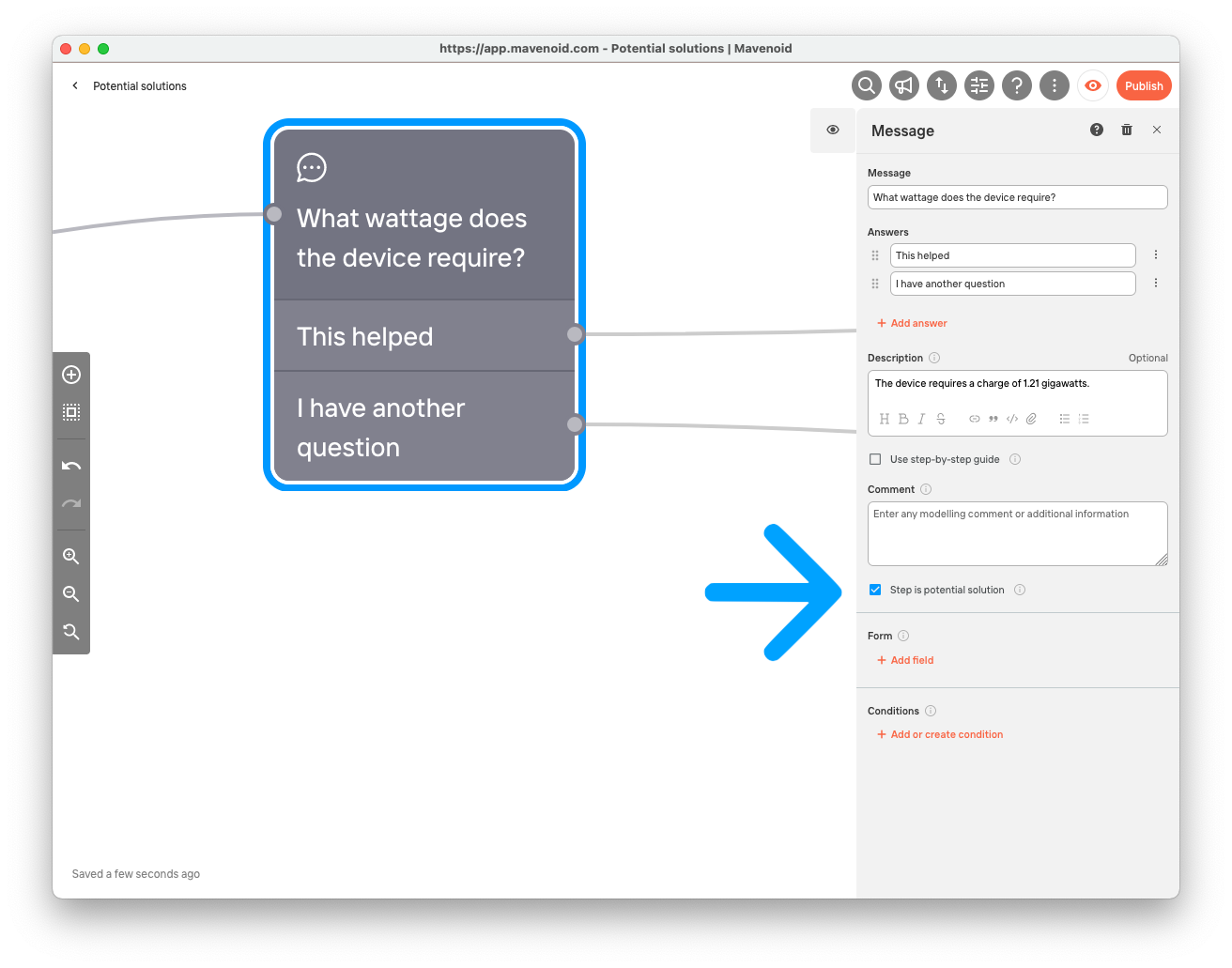Understand potential solutions
What is a potential solution?
In some cases, a flow may use non-solution nodes to present information that may solve a user's support request. For example, a flow may use message nodes to provide an answer to a FAQ question.
This works fine from a user perspective, but it can cause misleading analytics to be logged. If the user resolves their request on one of these nodes but does not indicate in the assistant that they have done so, this appears to be an abandoned conversation when actually it should be counted as a resolution.
You can resolve this by marking these nodes as potential solutions. Click on any question or message node to edit it and check the "Step is potential solution" checkbox. Only question and message nodes can be potential solutions.

This will cause analytics to track conversations that are abandoned on those nodes the same as if they'd been abandoned on a solution node. There will be no change in the user experience.
When to use potential solutions?
For your analytics to be meaningful, you should be thoughtful about which nodes should be counted as potential solutions. They should only be nodes that can actually solve support requests. We suggest only marking nodes that meet the following conditions:
- The node occurs after the user has made at least one choice or answered at least one question specifying the nature of their request.
- The node includes specific useful information that could completely solve the user's request. This includes links to specific other resources (such as a warranty claim form or product specification) but not ones to general resources (such as an entire user manual).
- The node does not come after an "Out of solutions" or "Escalate from menu" jump target.
- The node is not redirecting the user to another way to find help (such as a link to support forums or a contact form).